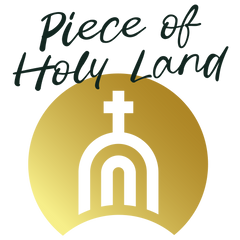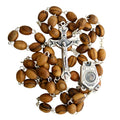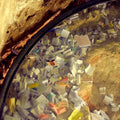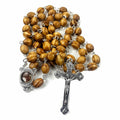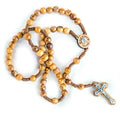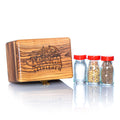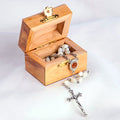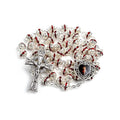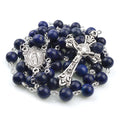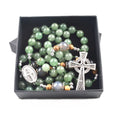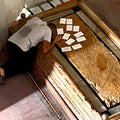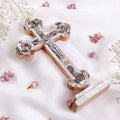Deir Al Sultan | The Sacred Rooftop of Jerusalem's Holiest Church
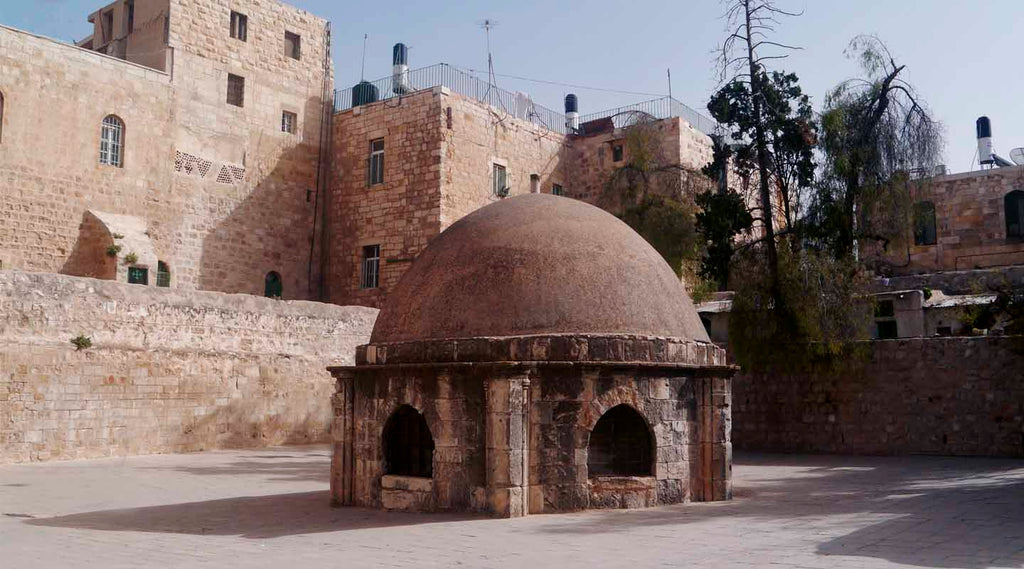
Explore the Coptic Monastery Above the Holy Sepulchre and Its Spiritual Relevance
The Overlooked Sacred Rooftop of Jerusalem
Nestled atop the roof of the Church of the Holy Sepulchre, Deir Al-Sultan is a sacred monastery with profound spiritual and historical depth. Despite being overshadowed by the more well-known sites below, such as Calvary and the Tomb of Christ, this rooftop sanctuary plays a significant role in Christian devotion, especially for the Coptic Orthodox Church.
The very soil of Deir Al-Sultan has witnessed centuries of liturgy, prayer, and perseverance amidst disputes and shared faith. In this article, we uncover the mysteries and tensions of this holy space, and how you can spiritually connect to it through prayer and sacred keepsakes.
What is Deir El Sultan?
Deir Al-Sultan, meaning “Monastery of the Sultan” in Arabic, is a Coptic Orthodox monastery established centuries ago and situated on the rooftop of the Church of the Holy Sepulchre in Jerusalem. The name likely traces back to a Muslim ruler’s historical grant of the property to the Coptic Church. This monastery serves as a place of worship and residence for Coptic monks and remains one of the lesser-known yet vital parts of Christian Jerusalem.
This elevated sanctuary is also claimed by the Ethiopian Orthodox Church, and the two communities have coexisted here amid prolonged disputes over rightful ownership. Despite these tensions, the monastery remains a living space of prayer and monastic discipline.

Spiritual Importance Above the Holiest Ground
While much attention is given to the Holy Sepulchre’s inner sanctuaries, Deir Al-Sultan serves as a symbolic watchtower over Christendom’s most sacred site. From this rooftop vantage point, pilgrims are spiritually and physically close to Golgotha and the empty tomb.
Deir Es Sultan offers an elevated connection to the mystery of Christ’s death and resurrection. For many Coptic and Ethiopian Christians, it represents a spiritual home in the heart of Jerusalem, echoing centuries of devotion and endurance.
Devotional Connections You Can Bring Home
Even if you can’t physically ascend the rooftop of the Holy Sepulchre, you can bring the spirit of this sacred place into your life. Through our Prayer Request Courier, your intentions are carried to the heart of Jerusalem’s Passion narrative.
Sacred items like the Olive Wood Thorn Cross offer a visual and tactile reminder of Christ’s suffering and triumph. Likewise, our Holy Soil Rosaries, filled with soil from Jerusalem, root your prayers in the very earth where the story of salvation unfolded.
Historical Tensions and Spiritual Coexistence
Ownership of Deir Al-Sultan has been the subject of long-standing disputes between the Coptic and Ethiopian Orthodox Churches. These tensions, which have spanned centuries, often draw attention during Holy Week and other major religious festivals.
Despite legal decisions and negotiations, the site remains a shared space, an imperfect yet inspiring testament to cohabitation rooted in faith. The monks of both traditions continue to live and worship here, offering daily prayers above the Tomb of Christ.
This layered history adds to the profound sense of devotion that surrounds Deir Al-Sultan, making it more than a site of conflict, it is a place of living faith.
Modern Pilgrimage and Prayer from Afar
Not all are able to walk the narrow stairs to Deir Al-Sultan’s rooftop, but the spirit of the monastery extends far beyond Jerusalem. Through our Prayer Request Service to Golgotha and The Church of Holy Sepulchre, you can submit your intentions to be placed just steps from the place of the Crucifixion.
These prayer requests form a bridge between believers around the world and the Holy Land, sustaining a tradition of intercession that stretches back to the earliest days of the Church.
And for those who wish to carry a lasting reminder of this devotion, the Olive Wood Thorn Cross and Holy Soil Rosaries remain popular, spiritually rich expressions of faith.
A Sacred Invitation for Today
Deir Al-Sultan, though modest in size and hidden from view, offers a powerful reminder that sanctity often lies in perseverance. It calls us to rise above division, to hold fast to our roots, and to live lives grounded in prayer and humility.
Whether you’re a pilgrim in Jerusalem or praying from across the globe, your connection to Deir Al-Sultan can be real and deep. Let this rooftop monastery inspire your faith journey and remind you that prayer knows no borders.
To take part in this tradition, submit your Golgotha Prayer Request or keep the sacred memory close with a Holy Soil Rosary or a thorn cross lovingly carved from olive wood. These holy symbols keep your faith rooted in the soil of salvation, and in the unshakable hope of the Resurrection.
Frequently Asked Questions About Deir Al-Sultan
Q: What is Deir Al-Sultan and where is it located?
Deir Al-Sultan is a Coptic Orthodox monastery located on the rooftop of the Church of the Holy Sepulchre in Jerusalem. Though less known than other parts of the church, it holds profound spiritual significance and is one of the holiest spaces in Christian tradition.
Q: Who currently manages Deir Al-Sultan?
Deir Al-Sultan is primarily managed by the Coptic Orthodox Church, though it has long been disputed by the Ethiopian Orthodox Church. Both communities share the space, with monks from both traditions living and worshipping there.
Q: Why is Deir Es-Sultan important to Christians?
Its location above the Church of the Holy Sepulchre gives it spiritual weight. It represents a sacred watchtower over Calvary and Christ’s Tomb, offering a unique connection to Jesus' Passion and Resurrection.
Q: Can I visit Deir Al-Sultan when in Jerusalem?
While the rooftop monastery is not as easily accessible as other sites in the Holy Sepulchre, pilgrims can reach it via side entrances and staircases. For those unable to travel, our Golgotha Prayer Request service lets you send your intentions to be placed just steps away from this sacred rooftop.
Q: What’s the connection between Deir Al-Sultan and Golgotha?
Deir Al-Sultan sits directly above the site of the Crucifixion. This rooftop view connects spiritually to Golgotha and makes it an especially meaningful place for prayer and reflection on the sacrifice of Jesus.
Q: Are there devotional items related to Deir Es-Sultan?
Yes. While not branded specifically as Deir Al-Sultan items, sacred products like the Olive Wood Thorn Cross and Holy Soil Rosaries serve as powerful symbols of Jerusalem’s sacred ground and the Passion of Christ.
Q: What does the name “Deir Al-Sultan” mean?
It translates from Arabic as “Monastery of the Sultan.” The name likely refers to a historical decree or recognition by a Muslim ruler, affirming the Coptic Church's right to worship there.
Q: How can I spiritually connect with Deir Es-Sultan from afar?
You can submit a Golgotha Prayer Request, which will be hand-delivered to the Church of the Holy Sepulchre. You can also use sacred objects like our Holy Soil Rosaries or a Thorn Cross as a physical reminder of your devotion.
Q: Why is there a dispute over Deir Al-Sultan?
The dispute stems from centuries-old debates over property rights and religious authority. Despite several legal rulings, tensions remain unresolved. Yet, both communities continue to pray and coexist in faith, making it a unique example of spiritual resilience.
Q: Is Deir Al-Sultan significant during Holy Week?
Absolutely. During Holy Week and Easter, this rooftop monastery becomes a focal point of worship for both Ethiopian and Coptic communities. It symbolizes perseverance in faith and shared reverence for the Resurrection.
SHARE:
